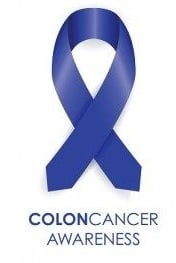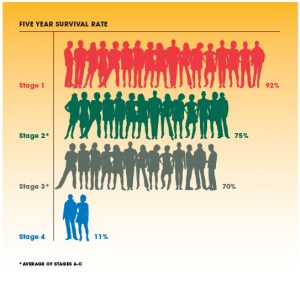At-home tests aid in early detection. Yet only half of Americans adhere to screening schedules. What can providers do to encourage participation?
Colorectal cancer incidence rates have declined since the mid-1980s due to changing patterns in risk factors and the widespread uptake of screening since 2000 among adults ages 50 and older.1 From 2011 through 2019, rates decreased by about 1% per year overall.
However, declining incidence is confined to individuals 65 and older. Among those younger than 55, rates have increased by 1% to 2% per year since the mid-1990s and have stabilized in adults 55 to 64. In fact, early-onset colorectal cancers are now the top cause of cancer deaths in men under the age of 50 and the second-leading cause of cancer deaths in women under 50 in the United States.2

A Two-Step Approach
The most important predictor of colorectal cancer survival is stage at diagnosis, which speaks to the importance of screening and early detection. The five-year survival rate is 90% for the 39% of patients diagnosed with localized-stage disease, but declines to 71% and 14% for those diagnosed with regional and distant stages, respectively.3
A two-step screening strategy is commonly used in clinical practice. Highly sensitive, non-invasive, at-home stool-based tests detect molecular markers and blood. If an at-home test is positive, invasive endoscopic methods, such as colonoscopy, CT colonography, and sigmoidoscopy, are performed to confirm the abnormal results.
Diagnostic Power at Your Doorstep
But for those who can't or won't do the bowel prep necessary for a colonoscopy, at-home testing kits have been shown to be successful at detecting early colon cancer lesions. They include:
- Fecal immunochemical test, or FIT, which uses antibodies to detect blood in the stool.4
- Multitarget stool DNA test (Cologuard® and Cologuard Plus).5
- Guaiac-based fecal occult blood test (gFOBT), which finds occult (hidden) blood in the stool through a chemical reaction.6
In May 2024, another at-home test -- St. Louis-based Geneoscopy Inc.’s ColoSense -- received marketing approval from the U.S. Food and Drug Administration.7 Geneoscopy says it is the first noninvasive colorectal cancer screening test to provide a dynamic view of disease activity by using RNA biomarkers.
Despite the convenience of at-home tests and the early detection they offer, only about half of Americans stick to recommended screening schedules.
The Unseen Obstacles
Despite the convenience of at-home tests and the early detection they offer, only about half of Americans stick to recommended screening schedules, such as those established by the American Gastroenterological Association and the U.S. Preventive Services Task Force.8 Some studies have shown that a significant proportion of individuals screened by FIT either do so inconsistently or fall into the “one-and-done” category.
Another challenge for at-home testing is the potential for patient error. A study led by UT Southwestern Medical Center in Dallas, Texas, offered insights into challenges that patients have collecting specimens, properly labeling samples and completing follow-up tests in a timely manner.10 The researchers advocated for more robust patient education strategies, better test-tracking procedures, and timely follow-up of problem tests.
What’s more, screening rates among Blacks and Hispanics/Latinos – while improving – still lag those among non-Hispanic Whites.11 Lack of health insurance is one reason, according to gastroenterologist Samir Gupta, M.D., of the University of California San Diego (UCSD), whose research focuses on screening and prevention. Other social and economic factors, such as the specter of historical mistreatment in research involving people from racial/ethnic minority groups, may also play a role.
Beyond Awareness
Despite these challenges, healthcare providers and public health professionals can take steps to increase at-home testing among their patients. For example, combining text messaging with mailing free at-home test kits can boost the number of people who get screened for colorectal cancer, according to researchers who conducted a clinical trial of more than 400 patients – primarily Black – of a community health center in southwest Philadelphia.12
Among those in the study who received a single text message reminding them that they were overdue for colorectal cancer screening, only about 2% were screened in the following 12 weeks. But among those who were sent a series of text messages and were mailed a fecal immunochemical test to use at home, approximately 20% completed the test and returned it by mail over the same time period.
CDC’s Colorectal Cancer Control Program (CRCCP) works with clinics, hospitals and other healthcare organizations to use and strengthen strategies that have been shown to increase screening.13 The program focuses on increasing screening among people ages 45 to 75 in clinics that serve people with lower incomes and where fewer than 60% of patients are up to date on screening.
Sekisui Diagnostics is committed to providing high quality rapid tests which are accurate and easy-to-use to get the answers fast.14 The OSOM® iFOB Test is a rapid qualitative test for the immunochemical detection of fecal occult blood/human hemoglobin (hHb) in human fecal specimens as an aid in the diagnosis of gastrointestinal disorders, including colorectal cancer, diverticulitis, colitis and polyps.15
References
- Cancer Facts & Figures 2024 (page 15), American Cancer Society
- More Young People Than Ever Will Get Colorectal Cancer This Year, New York Times
- Colorectal Cancer: We Have the Tools to Stay in Front of It, Sekisui Diagnostics
- At-Home Colorectal Cancer Screening: What You Should Know, Cedars Sinai
- The New England Journal of Medicine Publishes Cologuard Plus™ Test Results from Pivotal BLUE-C Study, Exact Sciences
- Colorectal Cancer Screening Tests, American Cancer Society
- FDA Approves ColoSense™-Geneoscopy’s Noninvasive Multi-target Stool RNA (mt-sRNA) Colorectal Cancer Screening Test, Geneoscopy
- At-Home Colorectal Cancer Screening: What You Should Know, Cedars Sinai
- Texting May Help Reduce Disparities in Colorectal Cancer Screening, National Cancer Institute
- At-home colorectal cancer screenings pose challenges for some, UT Southwestern Medical Center
- Texting May Help Reduce Disparities in Colorectal Cancer Screening, National Cancer Institute
- ibid
- How the Colorectal Cancer Control Program Increases Screening, Centers for Disease Control and Prevention
- Rapid Tests, Sekisui Diagnostics
- 15. OSOM® iFOB Test, Sekisui Diagnostics



Share Article